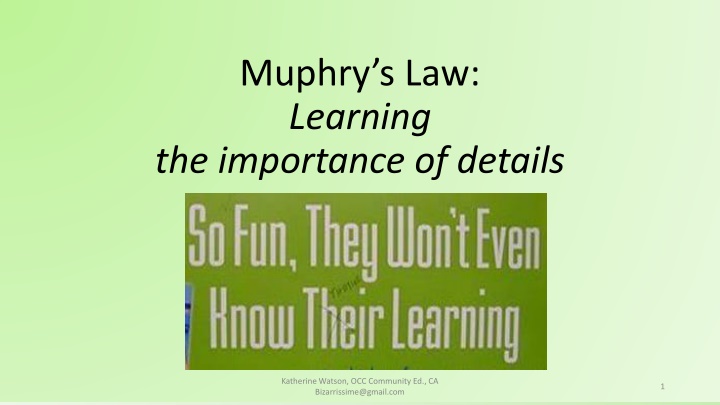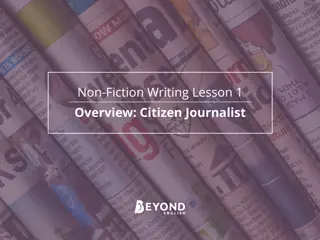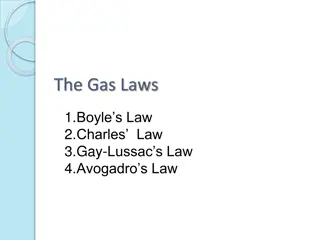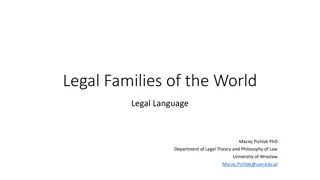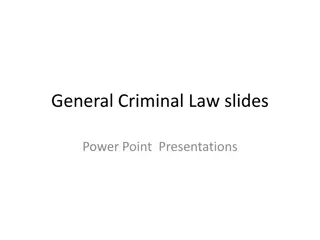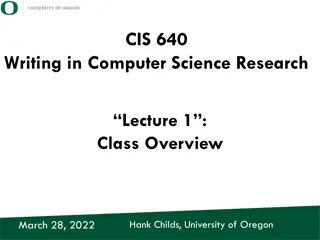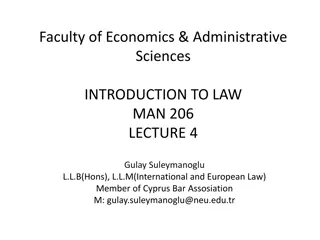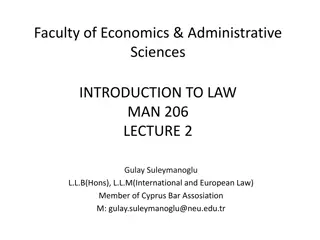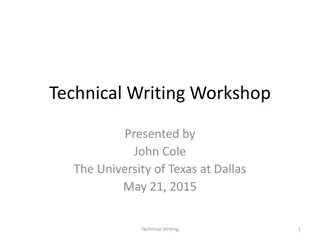Muphry's Law: Importance of Details in Writing
Explore Muphry's Law, which states that any criticism of writing will contain errors, and learn how to avoid such mistakes through improved editing and proofreading techniques. Discover ways to enhance details detection and eyesight for better proofreading accuracy. Dive into eye exercises like Eye Yoga and Hawk Eye program for visual speed and precision improvement.
Download Presentation

Please find below an Image/Link to download the presentation.
The content on the website is provided AS IS for your information and personal use only. It may not be sold, licensed, or shared on other websites without obtaining consent from the author.If you encounter any issues during the download, it is possible that the publisher has removed the file from their server.
You are allowed to download the files provided on this website for personal or commercial use, subject to the condition that they are used lawfully. All files are the property of their respective owners.
The content on the website is provided AS IS for your information and personal use only. It may not be sold, licensed, or shared on other websites without obtaining consent from the author.
E N D
Presentation Transcript
Muphrys Law: Learning the importance of details Katherine Watson, OCC Community Ed., CA Bizarrissime@gmail.com 1
Ok Heres Murphys Law Commonly understood: Anything that can go wrong will go wrong Really, according to Murphy s son: If there's more than one way for someone to do a job, and one of those ways will result in disaster, then he will do it that way. Katherine Watson, OCC Community Ed., CA Bizarrissime@gmail.com 2
And now: Muphrys Law Commonly understood: any criticism of writing or editing error will itself contain an error Really, according to Bangsund, Stockton, et al.: (a) any written criticism of editing or proofreading will include a fault of some kind; (b) if an author gives thanks in a book for editing or proofreading, there will be mistakes in the book; (c) the stronger the sentiment expressed in (a) and (b), the greater the fault; (d) any book devoted to editing or style will be internally inconsistent Katherine Watson, OCC Community Ed., CA Bizarrissime@gmail.com 3
Avoiding Muph three ways Details detection Improved editing Repeated proofreading Katherine Watson, OCC Community Ed., CA Bizarrissime@gmail.com 4
Not Muphing it, way 1: Details detection What is this? Attentiveness, awareness, alertness Why is it important? So that things will make sense How can it be assessed and improved? By betteringone s eyesight (exercising!) enhancingone s ability to notice (practice!) looking at & around (take it in!) Katherine Watson, OCC Community Ed., CA Bizarrissime@gmail.com 5
De-Muphing via eye exerciseshow? Use eye yoga Do the 10-10-10 Look up, down, left, right Look away, out to the distance Cover the (closed!) eyes for 20-30 seconds Katherine Watson, OCC Community Ed., CA Bizarrissime@gmail.com 6
De-Muphing: Hawk Eye eye program exercises Whatis it? A tool for improving visual speed and precision Why is it useful? Help speed up info processing & understanding How does it work? A number of timed tests, customized Ex.: A group of birds will appear & then quickly disappear. 7 Katherine Watson, OCC Community Ed., CA
De-Muph: Enhance & practice details detection: How? Useoptical illusions Use odd-one-out exercises Useanything anywhere look around Katherine Watson, OCC Community Ed., CA Bizarrissime@gmail.com 8
De-Muph: Look around, attend, detect Look, wonder, comment, discuss, take it in, question Katherine Watson, OCC Community Ed., CA Bizarrissime@gmail.com 9
Details detection training, Gagens 8 Teach careful looking directly! Emphasize care & accuracy. Encourage accuracy over speed. Lessons will wait. Correct students ; develop attention to detail. Stop students if something is missed or wrongly added Have students read responses to one another with care Avoidrushed situations; fast & sloppy work happens Avoid timing students; tracktime, but don t time students Stopsometimes! Some make errors not because they can t do the skill but because they don t take time to do it right Katherine Watson, OCC Community Ed., CA Bizarrissime@gmail.com 10
Not Muphing it, way 2: Improved editing Whatis it? Hmmm it is part of the thinking and writing process, from the start the literary equivalent of washing the dishes after a meal a way to ensure your work means what you want Whyis it important? Because unedited work may be confusing, embarrassing, or learning happens faster when things are clear clarity is always a good idea How does it work? Two principal ways: Ongoing & draft Katherine Watson, OCC Community Ed., CA Bizarrissime@gmail.com 11
Ongoing editing: How it works & keeps working 1. You start to write 2. You want to change a word, phrase, idea 3. You change it & continue 4. You back up & change punctuation mark or a transition 5. You thinkof something 6. You write down that new something 7. A whole new paragraph spins out 8. The process re-commences Katherine Watson, OCC Community Ed., CA Bizarrissime@gmail.com 12
Draft editing: How it works to help your work 1. Write for a while & then stop 2. Gather pages together 3. Read & mark 4. Notewhat does & doesn t work 5. Re-write 6. Remind yourself to be objective, detached 7. After re-writing, do this all again Katherine Watson, OCC Community Ed., CA Bizarrissime@gmail.com 13
5 Questions that each editor must pose 1. Have you chosen the most suitable words to convey meaning effectively? 2. Have you used the passive voice where active would be better? 3. Is the tone right for your audience? 4. Are there unnecessary words or overlong sentences? Cut! 5. Can the structure be changed to make the argument more persuasive? Katherine Watson, OCC Community Ed., CA Bizarrissime@gmail.com 14
4 ways to make students want to/love to edit Look for good stuff as well as not-so-good (mark these differently) Read the material aloud, to oneself or to others Give examples (e.g., project an editable doc for students to edit) After the first draft, wait at least three hours before editing Katherine Watson, OCC Community Ed., CA Bizarrissime@gmail.com 15
Editing and proofreading: Not the same 16 Katherine Watson, OCC Community Ed., CA
Not Muphing it, way 3: Repeated proofreading What is it? Checking, re-checking, and re-re-checking Why is it important? Find it before someone else does How is it taught and improved? Katherine Watson, OCC Community Ed., CA Bizarrissime@gmail.com 17
Proofreadingtips & tools UNC Avoid spell checkers. They are far from foolproof & are limited. Some words that show up as misspelled may just not be in their memory. Too, spell checkers will not catch misspellings that form other words. ( your & you re, to & too, and there & their, are problems) Grammar checkers can be problematic.They work with limited rules & can t identify every error, often making mistakes. They don t explain why sentences need revision. These tools might identify run-ons or too-frequent use of the passive voice, but be careful! Proofread for only one kind of error at a time. If you try to revise too much at once, you risk losing focus; proofreading will be less effective. It s easier to catch grammar errors if you aren t checking punctuation and spelling at the same time. Read slowly & read each word. Try reading out loud, saying each word and hearing the words together. When you read silently or fast, you may skip errors or make unconscious corrections. Separate text into individual sentences. This is another technique for reading each sentence carefully. Look for grammar, punctuation, or spelling errors. With printed copies, use an opaque object like a ruler or a piece of paper to isolate the line you re working on. Circle every punctuation mark. Look at each one. As you circle, ask yourself if the punctuation is correct. Read backwards. This technique is helpful to check spelling. Start with the last word on the last page and work back to the beginning, reading each word separately. Because content, punctuation, and grammar won t make any sense, focus will be only on spelling. Read backwards sentence by sentence to check grammar; this will help you avoid becoming distracted by content. Proofreading is a learning process.Don t just look for errors that you recognize; learn to notice & correct new errors. Handbooks and dictionaries help. Use them! Katherine Watson, OCC Community Ed., CA 18
Editing & proofreading: Tips for both Get some distance from the text! Put work aside for awhile. Clear your head. Or give the work to a friend. One reading the work ab initio sees with fresh eyes. Decide which medium permits the most careful read. Some like to work at the computer; others like to sit with a printed copy that they can mark as they read. Try changing the look of the document. Altering size, spacing, color, or style of text may trick your brain into thinking it s seeing an unfamiliar document, and that can help you get a new perspective on what you ve written. Find a quiet place to work.Don t proofread in front of TV or while on a treadmill. Find a place where you can concentrate and avoid distractions. If possible, editing and proofread in several short blocks of time. Concentration will wane if you try to proofread the entire text at once If you re short on time, prioritize. Do the important parts first Katherine Watson, OCC Community Ed., CA Bizarrissime@gmail.com 19
De-Muphing reminder: First, look. Katherine Watson, OCC Community Ed., CA Bizarrissime@gmail.com 20
De-Muphing fun: Practice every day Details: Play games Edit: Look around in the news, social media, etc. Proofread: Read If your worrying about spelling all those word scorrectly, that s bad Katherine Watson, OCC Community Ed., CA Bizarrissime@gmail.com 21
Dont Muph it Look, re-look, re-re-look Find Fix Think of consequences Katherine Watson, OCC Community Ed., CA Bizarrissime@gmail.com 22
